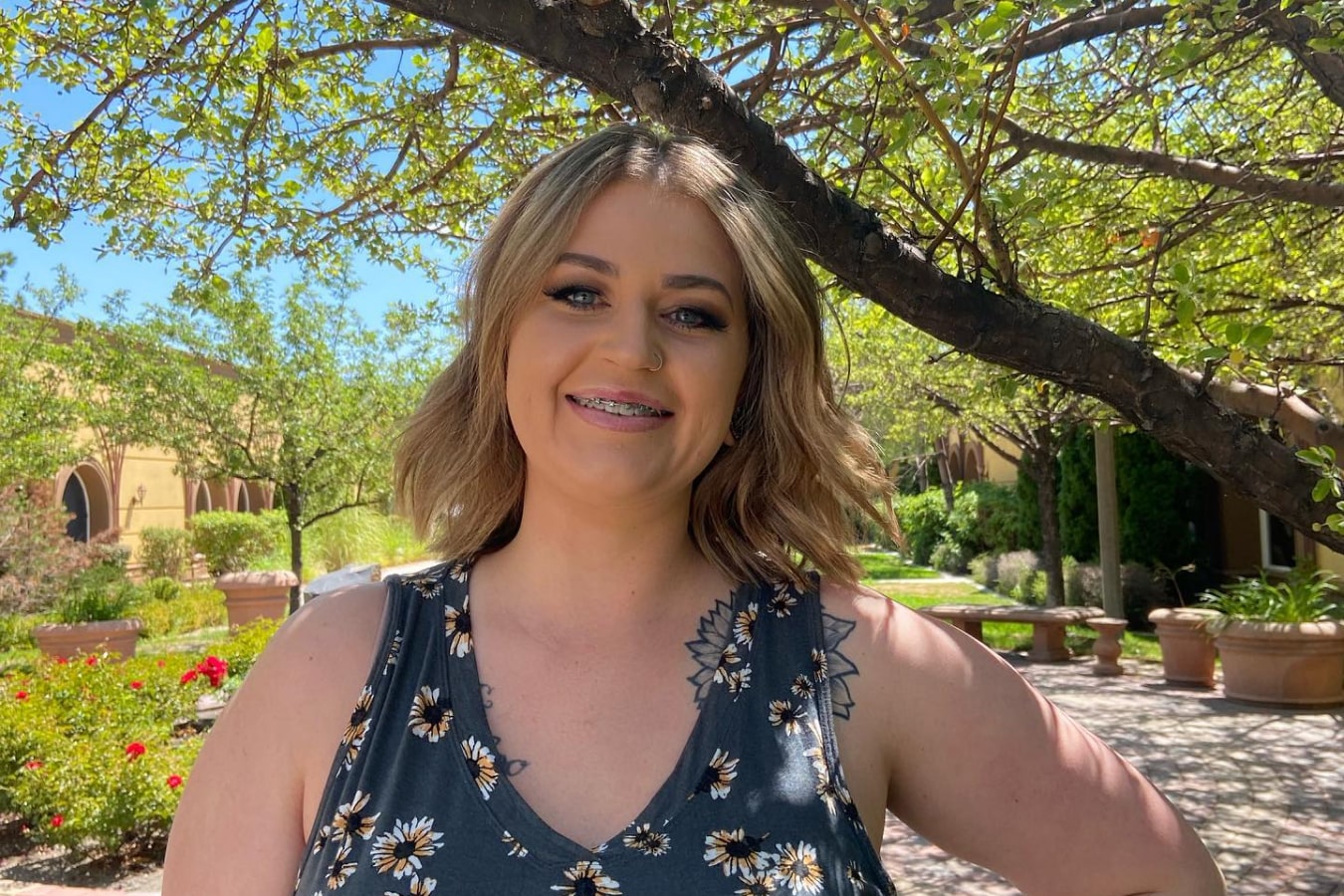Types of Braces
Traditional Metal Braces
The most common type of braces at Leland Orthodontics are metal braces. Dr. Andrew Leland has a long history of using these orthodontic icons to successfully straighten smiles for patients of every age around Reno and the surrounding areas.
The Nuts & Bolts of Braces
You’ve seen these before, the tried-and-true appliances that orthodontists have been using for decades. The good news is, it’s not like 30 years ago when there were bands wrapped around every tooth. Nowadays, we glue each bracket to the front of each tooth, which makes the process much more comfortable for you. You can even pick out the colors of your bands at each appointment!
When it comes down to it, braces are the tried-and-true method of orthodontic treatment. Thanks to advances in technology, your experience wearing braces is dramatically better than it was years ago. Here are the parts that make up your braces:
Brackets
The brackets Dr. Leland uses are durable and made from a mix of stainless steel, nickel, and other metals. Our mini twin brackets are smaller than older models and more comfortable than ever.
Brackets have little hooks where a wire is threaded. Brackets are secured by placing an elastic over the top of the wire.
Glue
Dr. Leland uses a special glue designed specifically for braces to attach the brackets to your teeth.
Wire
This thin piece of metal runs from one bracket to another. Dr. Leland will change the wire’s shape and curvature to move your teeth in the right direction. The wire will attach all of your bottom or upper and lower teeth together. We might occasionally cut the wire if connecting just a few teeth is better for your treatment plan.
Elastics
If you need bite correction, elastics are essential. They’re generally strung between an upper bracket hook and a lower bracket hook. This pulls your upper jaw backward to correct an overbite, or the lower jaw back to correct an underbite. We use rubber bands for many different situations.

Clear Ceramic Braces
Your Clear Alternative to Metal
Clear braces are shaped just like the metal ones, are still glued on the front of each tooth, and still have a wire connecting them, but are much less visible! Clear braces are a great option for patients who need braces, but want to tone down the “metal mouth effect.”
Dr. Leland uses them to correct your bite and align your smile the same way as metal braces. At Leland Orthodontics, clear braces are smaller than ever and made of nearly invisible tooth-colored polycrystalline ceramic material. Many older teen and adult patients at Leland Orthodontics love this more discreet treatment because it can help you get a beautiful smile without the visibility of metal braces.
These ceramic options blend in well with your natural smile. They’re not completely invisible, and the brackets are about the same size and shape as metal braces, but clear braces are much less noticeable for our Reno patients.
Differences Between Ceramic & Metal Braces
People all around Reno know metal braces for their strength and durability. Ceramic braces are also tough, but they are made from a different, slightly more fragile material.
If you need Dr. Leland to create more drastic corrections, metal braces could be a better option.
Adjustments with ceramic braces have to be slightly smaller, so treatment with clear braces at Leland Orthodontics can take a little longer. Having said that, both types of braces work the same and tend to be equally effective in most cases.
Will Clear Braces Stain?
You may be worried about ceramic braces staining, but thanks to modern technology, this isn’t a problem. While the brackets won’t stain, the adhesive Dr. Leland uses to attach the brackets to the teeth and the clear elastic ties that hold the wires in place can stain.
This can give an overall impression of discoloration or staining over time. You can choose to avoid things like coffee and tea, red wine, tomatoes, mustard, etc. to cut back on the chance of any staining. However, Dr. Leland makes sure we change your elastics at every adjustment appointment so you don’t have to worry.
If you maintain a good oral hygiene routine and follow the treatment plan designed by Dr. Leland, you shouldn’t have to worry too much about giving up your morning cup of coffee or evening glass of wine.

Braces For Kids
At Leland Orthodontics, we believe that every child deserves a healthy, beautiful smile. Braces for kids are one of the many specialized services we offer to help achieve this goal. By identifying and treating orthodontic issues early, we can help guide your child’s dental development and prevent more significant problems in the future.
The Importance of Early Orthodontic Treatment
The American Association of Orthodontists recommends that children have their first orthodontic screening by the age of seven. At this stage, they will have a mix of baby teeth and permanent teeth, making it easier for the orthodontist to diagnose and correct tooth and jaw problems sooner and without surgery.
Early orthodontic treatment, often referred to as interceptive orthodontics, is crucial in identifying and correcting dental issues while a child’s jaws are still growing. This proactive approach can simplify later treatment.
Benefits of early orthodontic treatment include:
- Guiding jaw growth to accommodate emerging teeth
- Reducing the risk of trauma to protruding front teeth
- Correcting harmful oral habits, like thumb sucking and tongue thrusting
- Improve a patient’s sleeping and breathing by establishing an ideal airway
- Improving appearance and self-esteem
- Creating room for crowded, erupting teeth
- Preserving space for unerupted teeth
Phase 1 Treatment
Phase 1 treatment, also known as early interceptive treatment, typically starts when a child is around six to ten years old. The goal of Phase 1 treatment is not to correct all the child’s teeth but to address issues that are easier to treat earlier rather than later.
During Phase 1 treatment, we use various orthodontic appliances, which may include partial braces or expanders, to improve severe crowding, deep overbites, underbites, and crossbites. This early intervention can help guide the jaw’s growth pattern, ensuring enough space for the permanent teeth to erupt properly.
Phase 1 is followed by a resting period where the remaining permanent teeth are allowed to erupt. After this stage, we’ll be able to determine if further treatment, such as Phase 2 or comprehensive treatment with full braces, is necessary.
At Leland Orthodontics, we understand that every child’s smile is unique. That’s why we’re committed to providing individualized care tailored to your child’s specific needs. Our experienced team will work closely with you and your child to create a treatment plan that ensures they grow into a healthy, confident smile.
If you think your child could benefit from early orthodontic treatment, we’d love to help you explore their options. Contact us today to request a free consultation and take the first step toward a lifetime of beautiful smiles!

Braces For Teens
At Leland Orthodontics, we believe that the teenage years are an optimal time for braces. With most permanent teeth fully developed, we can effectively address a range of orthodontic issues, from simple to complex, and guide your teen toward a healthier, more confident smile.
During adolescence, the jaw is still growing, making it the perfect time to correct misaligned teeth and bite problems. This period of rapid growth means the teeth are more conducive to movement, often resulting in quicker and more efficient treatment outcomes. Moreover, since many of their peers also have braces, teens generally feel less self-conscious about undergoing orthodontic treatment.
Life with Braces
While braces require some adjustments, they don’t have to hamper your teen’s lifestyle. With a few simple changes, your teen can continue enjoying their favorite activities while ensuring their braces stay intact and their teeth remain healthy.
While wearing braces, it’s best to avoid eating hard, crunchy, or sticky foods that could damage them. Encourage your teen to eat softer foods and cut fruits and veggies into smaller pieces to make chewing easier.
Good oral hygiene is crucial when wearing braces. Regular brushing and flossing after meals will help keep the braces clean and the teeth free of decay.
Braces don’t mean the end of sports or playing musical instruments. For sports, a protective mouthguard can be used to prevent any damage to the braces. If your teen plays a wind instrument, they might need a little time to adjust, but they’ll soon be back to making music!
Embracing Braces
At Leland Orthodontics, we aim to make the journey to a straighter smile as smooth and enjoyable as possible for your teen. We offer various braces options, including traditional metal braces and clear ceramic braces, to suit different needs and preferences.
Remember, braces are temporary, but the confidence that comes from a beautiful smile lasts a lifetime! If you’re ready to explore orthodontic options for your teen, contact us today to schedule a consultation. Our team is excited to guide you and your teen through this transformative journey.

Braces For Adults
At Leland Orthodontics, we believe that it’s never too late to achieve the smile of your dreams. More adults than ever are choosing braces, realizing the significant impact a confident, radiant smile can have on their personal and professional lives. Whether you’re seeking to correct long-standing dental issues or enhance your overall oral health, our team is here to guide you on your journey towards a healthier, more beautiful smile.
Why Consider Braces as an Adult?
Orthodontic treatment isn’t just about improving the aesthetics of your smile. It can also address various oral health concerns, such as misaligned teeth, crowding, irregular spacing, overbite, underbite, and crossbite. These issues can potentially lead to more serious problems like tooth decay, gum disease, difficulty in chewing and speaking, and even jaw pain.
Taking the step to correct these problems with braces can significantly improve your oral health, making everyday activities like eating, speaking, and cleaning your teeth easier and more comfortable. Moreover, a straight, well-aligned smile can boost your self-esteem, enhancing your overall quality of life.
Adapting to life with braces as an adult can be straightforward with a little preparation and commitment. Here are some aspects to consider:
- Dietary Adjustments — To protect your braces and teeth, you’ll need to avoid hard, sticky, or overly chewy foods that could damage your braces or get trapped in them.
- Oral Hygiene — Maintaining good oral hygiene is paramount when wearing braces. Regular brushing and flossing will keep your braces clean and your teeth healthy, preventing potential issues like cavities or gum disease.
- Scheduling Appointments — You’ll need regular appointments to adjust your braces and monitor your progress. We understand that adults lead busy lives, so we strive to offer flexible scheduling options to accommodate your needs.
At Leland Orthodontics, we’re committed to providing personalized, compassionate care to our adult patients. We understand that every smile is unique, and we’ll work closely with you to develop a treatment plan tailored to your specific goals and lifestyle.
Embrace the journey to a healthier, more confident smile. Contact us today to request a free consultation and start your path toward the smile you’ve always wanted. It’s time to invest in yourself!